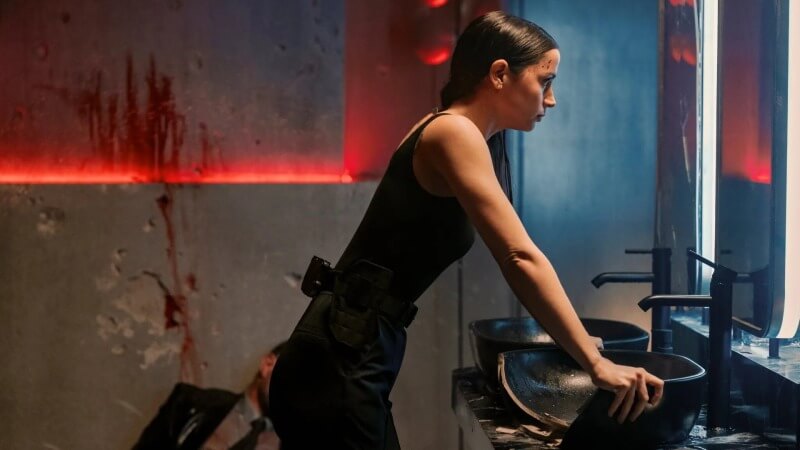Ballerina Painfully Contorts Itself to the John Wick Mold

Who directed what scenes in Ballerina? Did Len Wiseman, director of Underworld and Live Free or Die Hard, really step aside for John Wick maestro Chad Stahelski to clean up an unsatisfying franchise entry (as reported on live television by actor Ian McShane), or were the additional shoots an innocuous combination of restoring what was initially cut for budget reasons and an unfortunate health scare that took Wiseman away from set, as confirmed by Wiseman and Stahelski on the press tour? There is no point speculating on the granular details of who’s responsible for what footage, because not only will we likely not get the information, would it satisfy our questions as to why the sporadically entertaining Ballerina feels so disjointed, why it doesn’t seem to be about anything except satisfying the least interesting urges of John Wick fandom, and why it comes so suspiciously alive during its action sequences? Ultimately, speculation on a troubled production will not make the film better.
Eve Macarro (Ana de Armas) is a child when her father is killed by the Chancellor (Garbriel Byrne), a vengeful clan boss who wants Eve for his private society of lethal assassins. She is saved by Winston Scott (Ian McShane), who delivers her to the Ruska Roma – the Russian ballet company-themed organization we glimpse at in Chapter 3 – Parabellum – and train her to be a Kikimora, a killer modeled on the female house spirit of Slavic mythology. But the pain of her father’s murder makes her ill-fitted for the closely-knit ranks of assassin life, and after finding an X-shaped scar on an opponent’s wrist just like the one her father’s killers had, she embarks on a clandestine mission to purge the evil cell of self-reliant killers who ruined her life.
Perhaps Lionsgate, Stahelski, and Wiseman were troubled by the lukewarm reception to the Amazon miniseries The Continental (which was also saddled with the cumbersome subtitle “From the World of John Wick) and realized they should probably insert John Wick (Keanu Reeves) into future spin-offs to avoid a certain degree of fan apathy. After an initial cameo at Ruska Roma headquarters (which also establishes that Ballerina takes place simultaneously with Parabellum), de Armas is given a chance to come into her own without Wick’s shadow hanging above her (at least for a while). No-one does a particularly good performance in Ballerina; it’s hard to sell a flesh-and-blood character who only broods menacingly, spouts labored exposition, or does their best Blue Steel any time they’re on screen.
A degree of this monotony is inevitable – the insisted retro bureaucracy of John Wick’s assassin world, combined with its obligation to escalate and expand in every sequel, is not as fresh as it was during the peak years of accelerating, all-out action sequels. But at least Keanu acted as an anchoring presence of neon-drenched, black-clad cool, whose awkward, gravelly delivery absorbed and accepted some of the silliness of the world-building. (If everybody is an incredible assassin, then maybe no-one is.) By contrast, De Armas only feels at home as Eve during kinetic action sequences, where her months at the Wick Training Academy have paid off with a lively, precise, and acrobatic presence.